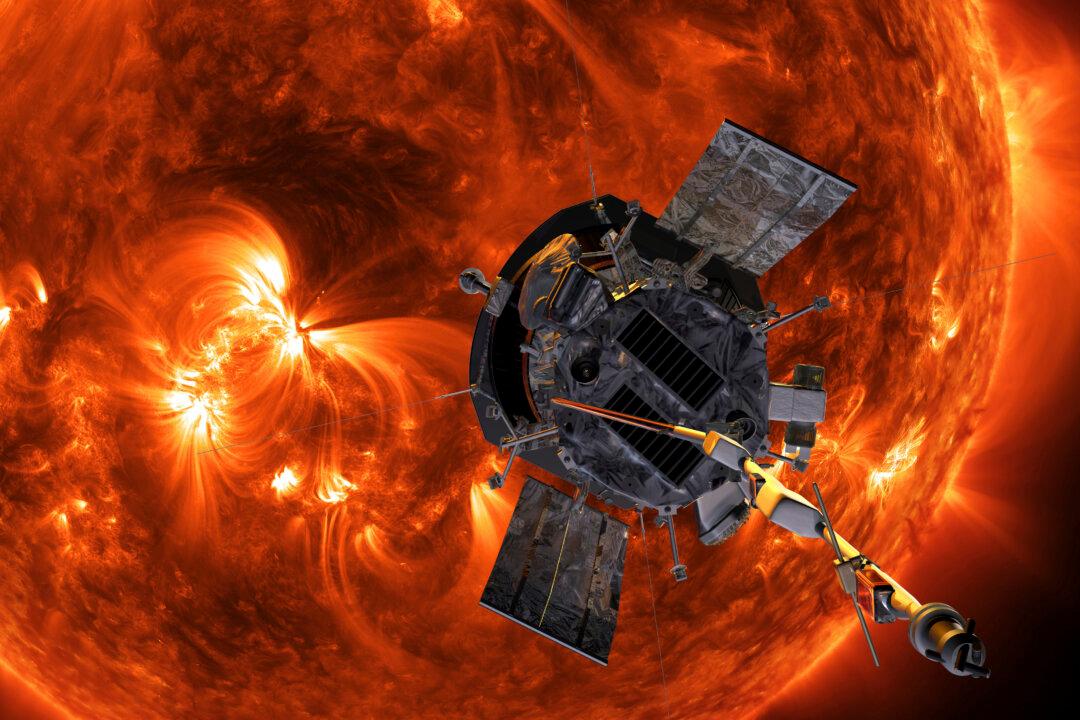On Sunday evening, the Moon will pass through the shadow of the Earth, creating a total lunar eclipse.
For space watchers down on the ground, it’s a rare but exciting opportunity to see a phenomenon that has fascinated humans for millennia.
It will be visible over much of the world. People in South America and parts of North America will be able to see the full eclipse, and a partial eclipse will be seen in places as far apart as New Zealand and Eastern Europe.
“The wonderful thing is that when the moon is entirely in the shadow, when it’s in the darkest part of the shadow, the moon will actually look to your eyes to be kind of rose-colored or orange colored. And that’s actually because your eyes are adjusting to that darker light. And in fact, the only light getting up to the moon at this point is light that is scattering through the Earth’s atmosphere,” says Michelle Thaler, NASA scientist.
“So most people know, of course, that the moon is made of rock, actually very dark rock. So when you see it shining in the night sky, it’s reflecting sunlight. So in this case, the Earth is getting in the way of that sunlight. And the only light hitting the surface of the moon and getting back to us, bouncing back to us, is light that’s actually filtering through the atmosphere of the Earth. And it’s really the same effect as to why a sunset or sunrise looks red.”
The cycle of lunar eclipses is entirely predictable now, thanks to astronomers’ understanding of our solar system.

But the Moon still has many other secrets it can share.
Scientists see great benefit in studying our celestial neighbor.
“The thing I find most significant about the moon is that its surface is largely unchanged for billions of years since practically the beginning of the solar system. And on Earth, of course, we don’t have that opportunity,” says Thaler.
“So as a scientist, there are things up there that are going to tell us about the history of the Earth, what the Earth’s environment in space has been like, about what has hit the Earth in the past, which if things also hit the moon as well.”
NASA has already announced plans to send humans back there on its so-called Artemis missions.
It hopes to land a crew, including the first woman and person of color, on the lunar surface by 2024.
Eventually, it wants to establish a base camp there so that astronauts can stay on the Moon for months at a time.
Before that happens, there is work to be done.
“We have quite a ways to go yet to make sure that it’s going to be safe. We want to obviously make sure we have the most successful mission possible. So we’re beginning by sending a lot of robotic spacecraft and some of the things that I’m most looking forward to, for one, there’s actually there’s actually NASA’s rover called Viper that will be going up there and looking for the kinds of resources that astronauts may need for a sustained presence on the moon,” says Thaler.
Next year, NASA hopes to land its lunar rover VIPER at the Moon’s South Pole.
The robot will spend 100 days searching for ice and other resources.
If the Artemis missions are successful, they could pave the way for mankind to go even further.
It’s considered to be a key step towards the exploration of Mars.
“People when they go to Mars will have to be completely independent. They will have to be able to repair their spacecraft, deal with any type of medical emergencies. Even communications will be more complicated with people on Mars. The moon is this planetary body that we can stand on and test things and actually expose our technology to this rugged environment of space. And it’s right here. It’s always going along with the Earth. It’s only just a couple of days journey back and forth to the moon. And so, to me, it seems an obvious proving ground to go farther out into the solar system,” says Thaler.
Space exploration science has previously meant technological advancements here on planet Earth too.
For example, making computers smaller so they could fit on spacecraft also led to smaller devices for the whole world—like laptops and cell phones.
So the next generation of space explorers could change life for us all.
“I’m wondering what’s going to happen the next time we stand on the moon and what that will lead to. I know people are talking a lot about advances in things like water purification, how that can be used around the planet to save people all the time. What’s that going to do to our communication? What’s that going to do to again, to computers and to artificial intelligence? A lot of these rovers and these CLPS (Commercial Lunar Payload Services, program of private companies working with NASA on Moon missions), missions that we’re sending are going to be making extensive use of artificial intelligence for the first time on the moon,” says Thaler.
“But I mean, that’s a good answer. That’s kind of the things that I find most important about Apollo. But I have to say, I’ve never experienced a night looking up and saying humanity is on the moon, and that is giving me goose bumps. That’s what I’m looking forward to.”
As the Earth casts its shadow over the Moon, it’s worth thinking about what new discoveries could soon be brought out into the light.





